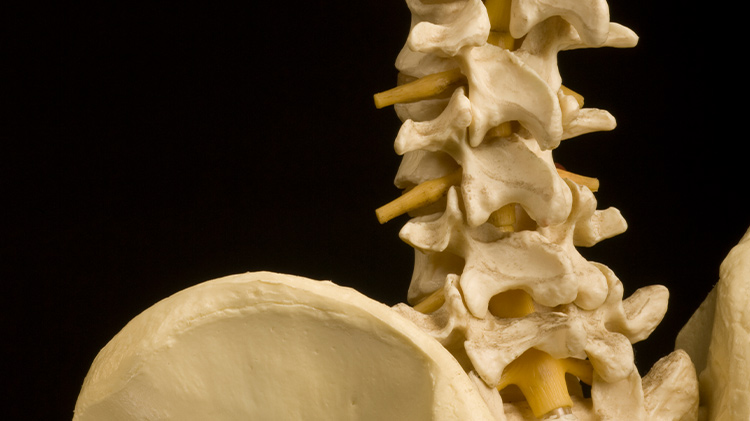When spinal surgery goes wrong
25 Jun 2020

While spinal surgery has successfully helped a great many patients, the outcome can be catastrophic if it goes wrong.
The Health Care Complaints Commission prosecuted a complaint against a surgeon before a Medical Professional Standards Committee concerning spinal surgery on the wrong side of the spine – contrary to the patient’s consent and without adequate ‘time-out’ procedures to properly check the correct site for the surgery.
The Committee found the doctor’s conduct amounted to unsatisfactory professional conduct and reprimanded him. It also imposed conditions on his registration that he submit to future audit of his medical records and provide evidence of his future participation in ‘time-out’ procedures.1
Claims data
- Claims against MDA National’s neurosurgeons in the last 15 years show that 58% of incidents and 78% of incurred costs involved spinal surgery.
- 6% of our orthopaedic surgeons who do spinal surgery account for 13% of claims costs for all orthopaedic surgeons.
These figures are in keeping with US neurosurgeons’ claims data.2
Negative outcomes for patients can be catastrophic – e.g. paraplegia, incontinence, and severe and/or chronic pain. Accordingly, payouts can be large. Several cases at MDA National have cost over $1 million, with some exceeding $3 million.
Surgeons have also been subject to disciplinary action, such as having conditions placed on their registration.
Procedure involved
Analysis of MDA National’s cases shows that:
- procedures in the lumbar region were most involved (>60%)
- the wrong spinal level was operated on in approximately 10% of cases
- procedures most often involved, in order of significance, were:
- fusion
- laminectomy
- microdiscectomy
- discectomy
- foraminotomy
Common themes in claims
Poor choice of patient or procedure
- Referrals to surgeons and decisions to operate should be made according to evidence-based clinical thresholds, for example:
- there is high-quality evidence for open discectomy in patients with persistent, disabling chronic low back pain with radiculopathy due to herniated lumbar discs or spinal stenosis3
- lumbar spinal fusion is not recommended for treatment of uncomplicated axial chronic low back pain, according to the Choosing Wisely campaign,4 and MBS items for spinal fusion are not claimable for the treatment of uncomplicated axial chronic lower back pain.5 - Co-morbidities are associated with significant increases in complications.6
- Psychological components of chronic pain can complicate recovery.7
- A study of NSW workers’ compensation patients concluded that the outcomes of spinal fusions were so poor that they were not recommended for this group.8
Problems with the consent process
- A study of patients undergoing spinal stenosis surgery revealed that patients frequently had unrealistic expectations of their surgery and consequently tended to have lower levels of satisfaction.9
- Failure to explain the risks and adverse effects of surgery, and failure to explain alternative treatment options were the two most common consent allegations in a retrospective cohort study of malpractice claims for spinal surgery.10
- Obtaining consent on the hospital ward or in the pre-operative holding area was associated with an increased risk than when consent was obtained in the rooms of the operating surgeon.11
- Patient understanding following their consent for orthopaedic procedures is significantly improved using procedure-specific consent forms.12
- Documentation of appropriate informed consent in the notes of the surgeon protects the surgeon and helps defend a claim.
Failure to follow standard protocols
- Spinal localisation can be challenging, but there are many strategies to help ensure accurate intraoperative localisation.13
- Patient positioning should be afforded great care to minimise compression or traction of neurological structures.14
- Imaging should be checked for anatomic particularities, and high-quality imaging insisted upon.14
- Equipment-related failures have been implicated in surgical errors and adverse events – an equipment check is recommended as part of a pre-operative surgical safety checklist.15,16
- Surgeons should adhere to RACS’ standards on safe working hours17 and long elective operating lists18 and, where possible, operate with a consistent theatre team.19
Delay in recognition of complications
- Delays in the diagnosis and treatment of post-operative complications of spinal surgery may have devastating consequences and have been found to be predictive of a plaintiff victory in litigation.20
- Recovery room staff, other treating health professionals and patients should be informed about signs and symptoms to be concerned about and how to contact the surgeon urgently.
Useful reading: Surgeons and holidays - what are the risks?
References
-
NSW Health Care Complaints Commission Media Release 2012: hccc.nsw.gov.au/publications/media-releases/dr-terrence-hillier---found-guilty-of-unsatisfactory-professional-conduct-by-medical-professional-standards-committee
-
ASERNIPS/RACS Spinal surgery for chronic low back pain: review of clinical evidence and guidelines: health.vic.gov.au/about/publications/policiesandguidelines/spinal-surgery-for-chronic-low-back-pain
-
Choosing Wisely Australia, Faculty of Pain Medicine, ANZCA: choosingwisely.org.au/recommendations/fpm5
-
MBS Online Changes to MBS items for spinal surgery-FAQs: mbsonline.gov.au/internet/mbsonline/publishing.nsf/content/factsheet-spinalsurgery%20faqs
-
Pham C, Gibb C, Field J, et al. Managing high-risk surgical patients: modifiable co-morbidities matter. ANZ J Surg. 2014; 84: 925–931
-
Atkinson L & Zacest A. Surgical management of low back pain. MJA. 2016, 204(8):299-300
-
Harris IA, Dantanarayana N & Naylor JM. Spine surgery outcomes in a workers’ compensation cohort. ANZ J Surg. 2001;82:625-629
-
McGregor AH, Hughes SP. The evaluation of the surgical management of nerve root compression in patients with low back pain. Part 2. Patient expectations and satisfaction. Spine 2002;27:1471–6; discussion 6–7
-
Grauberger J et al. Allegations of failure to obtain informed consent in spinal surgery medical malpractice claims. JAMA Surg. 2017; 152(6):e170544
-
Bhattacharyya T, Yeon H & Harris MB. The Medical-Legal Aspects of Informed Consent in Orthopaedic Surgery. J Bone Joint Surg Am, 2005
-
Barritt AW, Clark L, Teoh V, Cohen AMM & Gibb PA (2010) Assessing the adequacy of procedure-specific consent forms in orthopaedic surgery against current methods of operative consent. RCS Anals 92
-
Hsu W, Kretzer RM Dorsi MJ & Gokaslan ZL. Strategies to Avoid Wrong-site Surgery During Spinal Procedures. Neurosurg Focus. 2011;31(4):e5
-
de Loubresse CG. Neurological risks in scheduled spinal surgery. Orthopaedics & Traumatology: Surgery & Research 2014 100: S85-S90
-
Weerakkody RA et al Surgical technology and operating-room safety failures: a systematic review of quantitative studies. BMJ Qual Saf 2013;22:710-718
-
De Vries EN, Eikens-Jansen MP, Hamersma AM et al. Prevention of surgical malpractice claims by use of a surgical safety checklist. Ann Surg. 2011;253:624-628
-
Royal Australasian College of Surgeons. Standards for Safe Working Hours and Conditions for Fellows, Surgical Trainees and International Medical Graduates. 2007. Melbourne
-
Royal Australasian College of Surgeons. Position Paper: Long elective operating lists. Ref FES-PST-043. 2014
-
Gillespie BM, Chaboyer W, Fairweather N. Interruptions and miscommunications in surgery: an observational study. AORN J. 2012;95:576–590
-
Daniels AH et al Malpractice litigation following spine surgery. J Neurosurg Spine 2017;27:470-475
Professional boundaries in healthcare - Part 1
Boundaries with patients present in numerous ways every day and all health practitioners
11 Aug 2025
Understanding Professional Medical Indemnity Insurance
Do you understand the ins and outs of professional medical indemnity insurance?
11 Aug 2025
Professional boundaries in healthcare - Part 2
Boundaries with patients present in numerous ways every day and all health practitioners
11 Aug 2025
Understanding changes to the Fair Work Act
What are the changes to the Fair Work Act and what is my role?
22 Jul 2025






